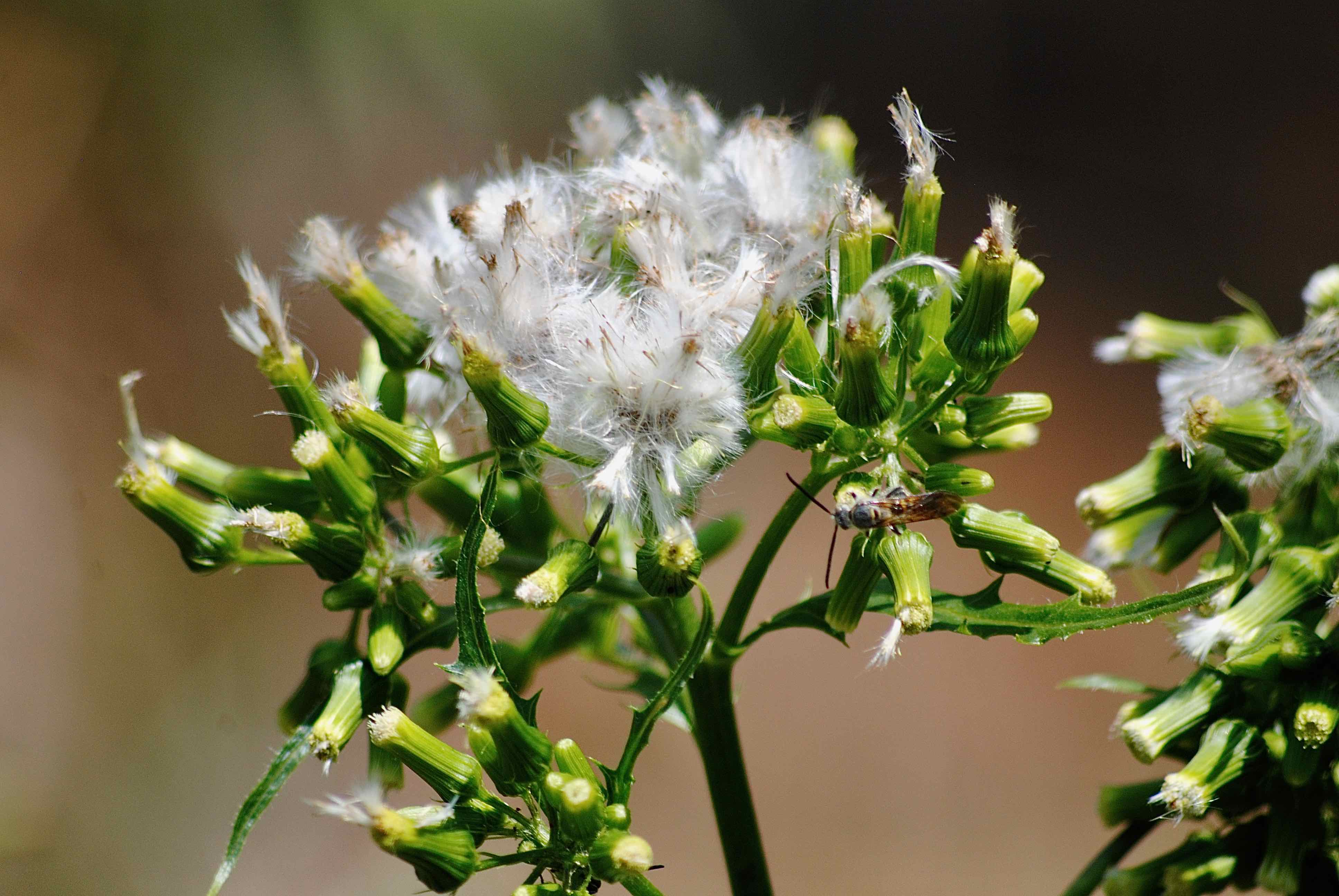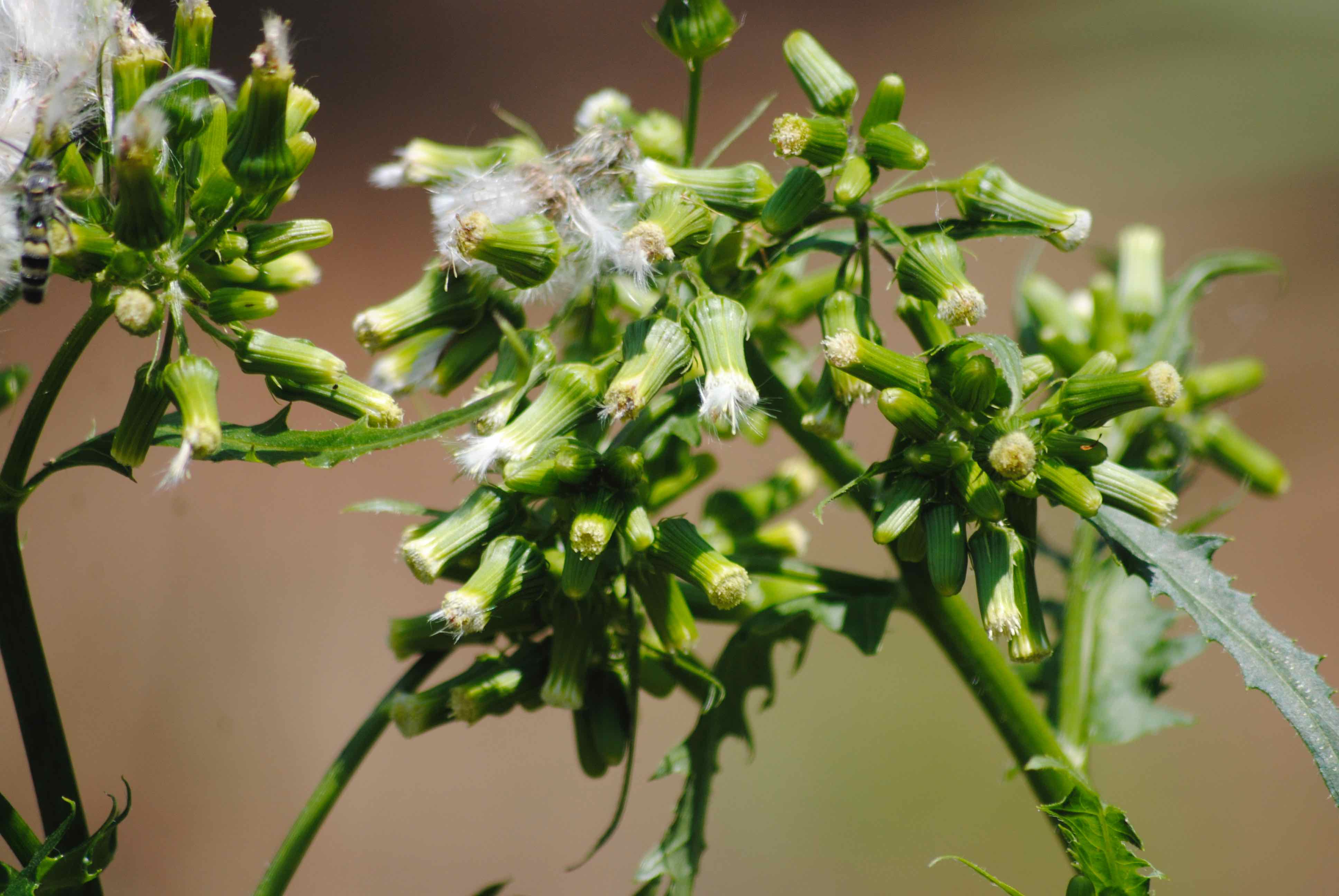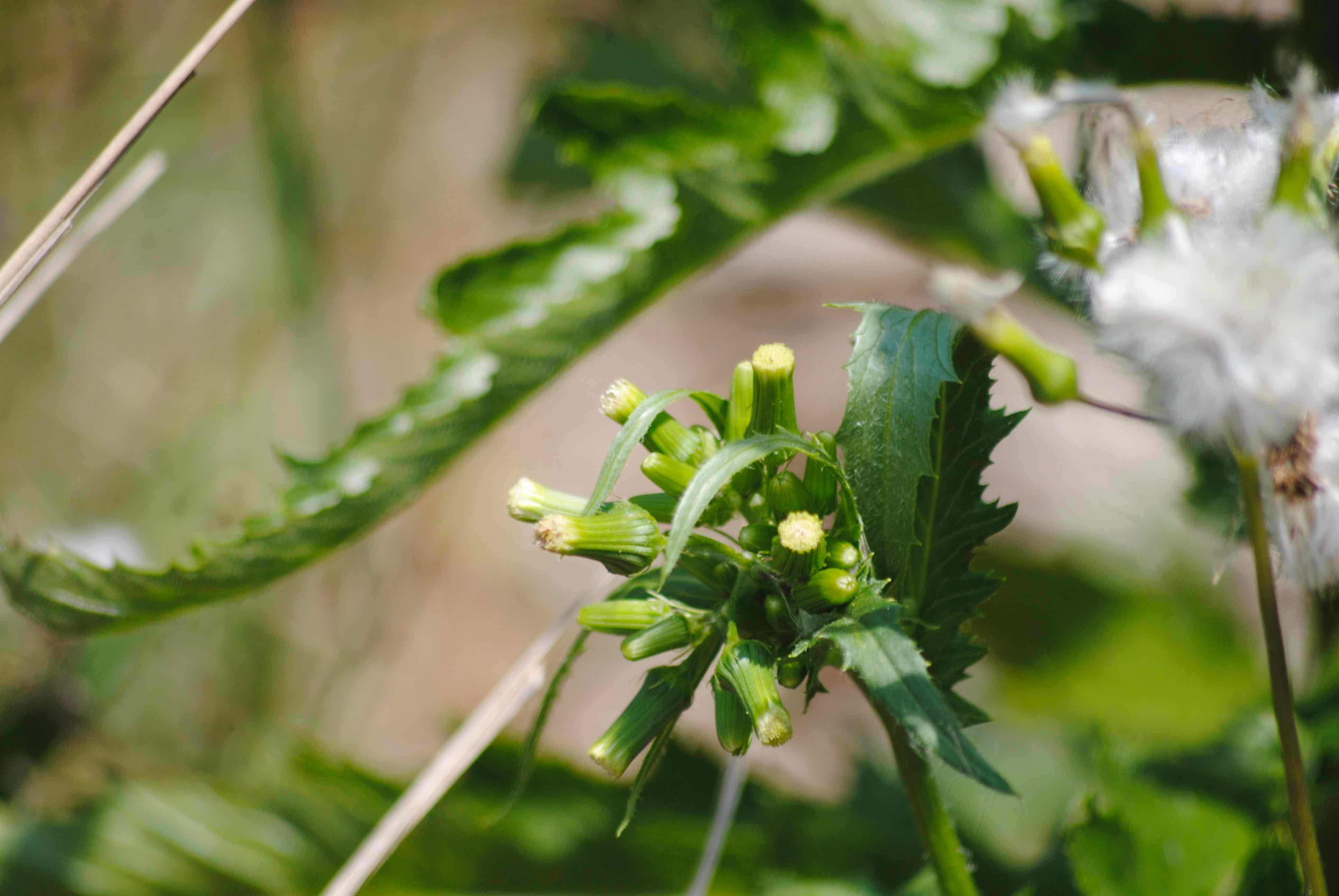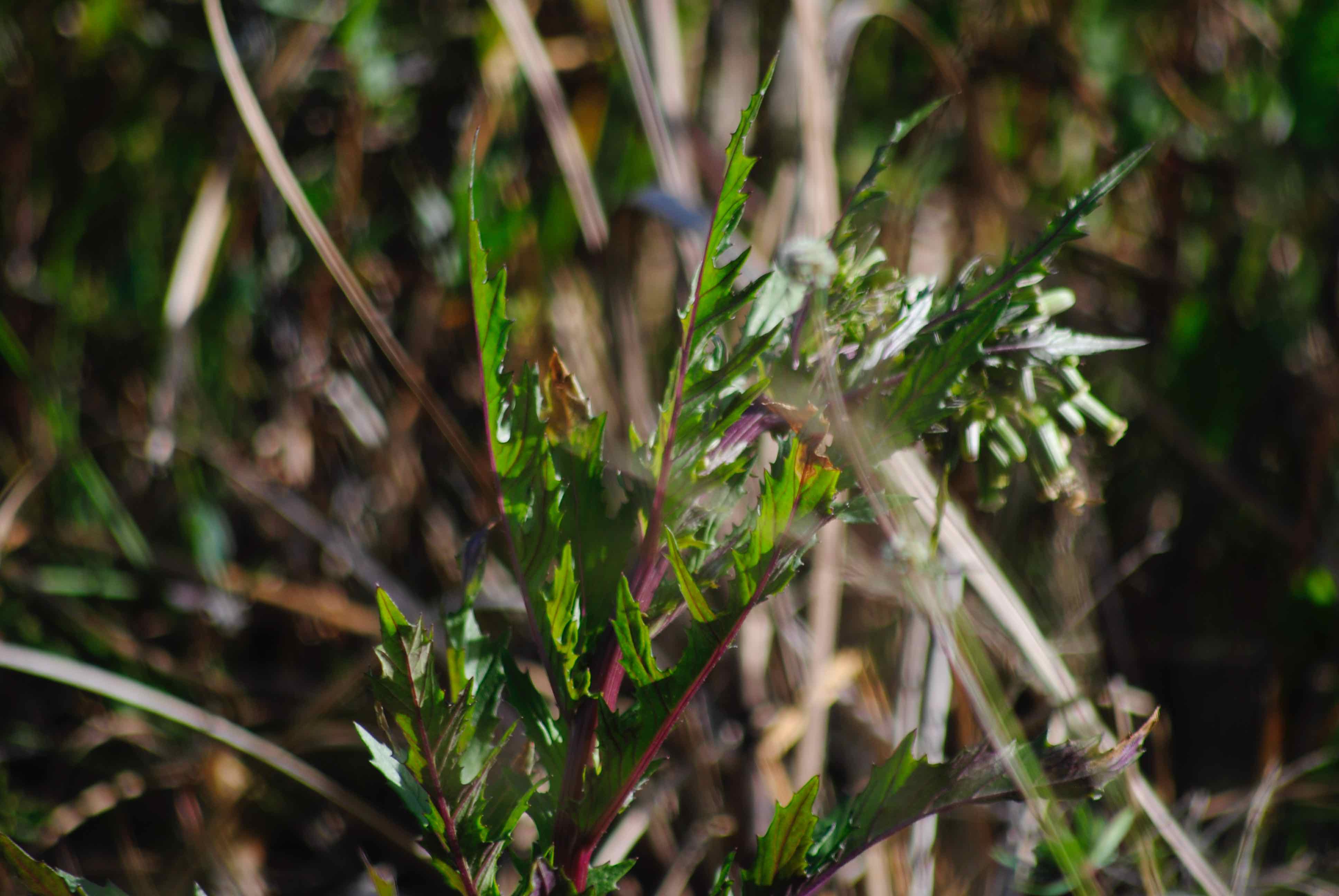
American burnweed, photographed at Military Trail Natural Area, Deerfield Beach, Broward County, in August 2014.
The strange thing about American burnweed, Erechtites hieracifolius, is that it never seems to bloom, the flowers appearing to be either just about ready to open up or already have gone to seed. Of course they do open, but just barely, modestly, unspectacularly so.
This is a widely scattered plant, found throughout most of North America from Canada's Maritime Provinces southward to Maine to Florida, westward to Washington, Oregon and California. It's found in Mexico, the Caribbean, Central America and South America. Burnweed is found in just about every Florida county; the South Florida exception: Monroe. American burnweed has been naturalized around the globe, but hasn't seemed to make too much of a menace of itself from our research. In other words, it's not considered an invasive anywhere.
It is an annual, flowering from spring to fall here in South Florida, summer to fall elsewhere. The flowers are greenish-white, some might say yellow. They are bulb-like at the base, brushlike at the tip and lacking petals, or at least what we typically think of as petals. They can be mistaken for an unopened blossom.
Burnweed has long, lance-like leaves that are deeply toothed and sometimes lobed. Burnweed can have hairs, or not. It can be tall, approaching seven feet. When crushed, it has a distinct, some say unpleaseant, smell to it. The flowers put out dozens of cottony seeds that are dispersed by wind. Wasps tend to be attracted to burnweed and do much of the pollinating (a careful look will reveal one in the photo above).
Burnweed gets its name from its propensity to pop up after a fire. It is one of the first plants to colonize an area that's been burned. According to Eat the Weeds, the first part of the scientific name is Greek for "troubles from the earth." Along the same line, it's sometimes called fireweed.
According to the same website, burnweed is quite edible, either as a cooked green or raw, if you can get past that strange smell. Young plants are best, if it is to be eaten as a salad green.
An oil extracted from burnweed is used as a folk remedy for hemorrhoids, which perhaps is the reason for another name: pilewort. The oil is also used to treat dysentery. In late 19th century burnweed was considered "an unrivaled medicine in diseases of the mucous tissues of the lungs, stomach, and bowels." It was used to stimulate menstruation and as a treatment for gonorrhea, "muscular rheumatism" and sciatica.
Other common names include goat's chicory, stickers, burn weed, sun's ribs and dog weed. It is a member of Asteraceae, the sunflower and daisy family. Close relatives include chicory and dandelions.
Military Trail Natural Area



